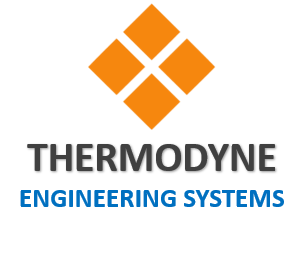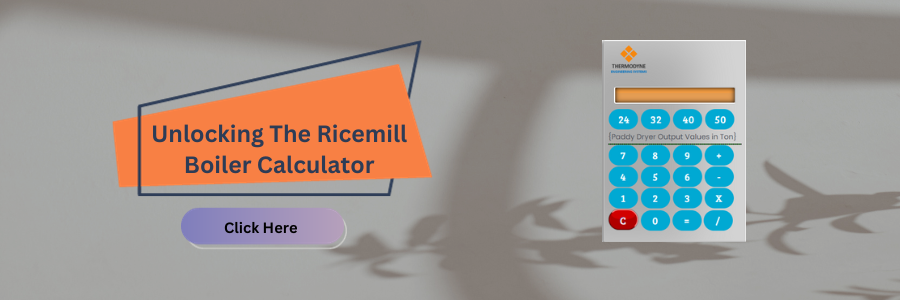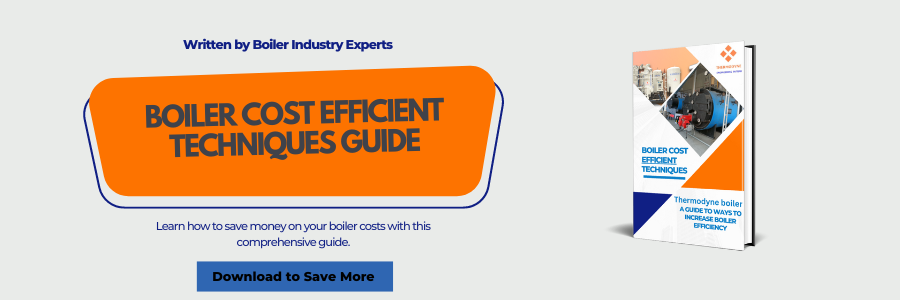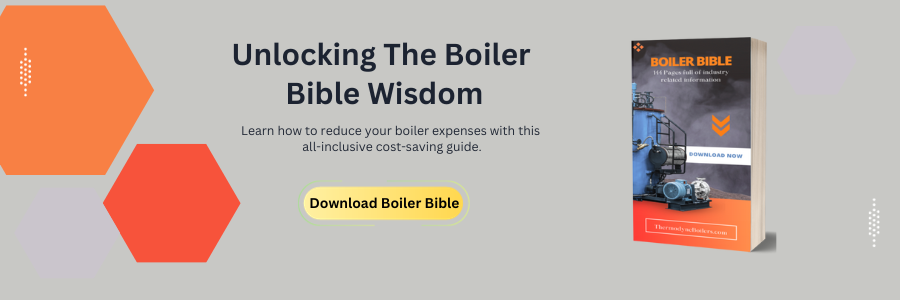Boilers are essential heat exchange devices used across various industries to generate steam or hot water by converting energy from a fuel source into heat. This heat is then transferred to a working fluid to produce steam, which can be used for various purposes, including heating, power generation, and industrial processes. Boilers play a crucial role in industries such as power generation, manufacturing, food processing, chemical production, and more, serving as the backbone of many industrial processes.
Importance of Boiler Mountings:
Boiler mountings are an integral part of boiler systems and are vital for ensuring the safe and efficient operation of boilers. These components are specifically designed to address various safety and control aspects during the operation of a boiler. The significance of boiler mountings can be understood through the following points:
1. Safety Enhancement: Boiler mountings are primarily focused on ensuring the safety of both personnel and equipment. They prevent potentially catastrophic events like boiler explosions due to overpressure or low water levels.
2. Regulation of Boiler Operations: Mountings such as pressure gauges, water level indicators, and temperature controls help operators monitor and control critical parameters within the boiler, allowing them to maintain optimal operating conditions.
3. Efficiency Improvement: Properly functioning boiler mountings contribute to efficient heat transfer and steam production. Maintaining accurate pressure, temperature, and water level readings helps optimise energy usage and fuel efficiency.
4. Prevention of Equipment Damage:Boiler mountings prevent excessive strain on internal components by releasing excess pressure or shutting down operations if certain parameters exceed safe limits.
5. Compliance with Regulations: Many industries are subject to strict safety regulations regarding boiler operation. Properly installed and maintained boiler mounting aid in meeting these regulatory requirements.
Table of Contents
Definition of Boiler Mountings and Their Distinction from Boiler Accessories
Boiler mountings are essential components integrated into a boiler system to ensure its safe and efficient operation. These mountings serve critical safety and control functions by regulating various parameters within the boiler. Unlike boiler accessories, which enhance the overall system’s performance, mountings are primarily concerned with maintaining safety and operational integrity.
Explanation of Safety and Control Functions Served by Boiler Mountings:
Boiler mountings play a pivotal role in ensuring the safety of boiler operations and the personnel working with them. They also contribute to controlling and maintaining optimal operational conditions. The key safety and control functions of boiler mountings include:
1. Pressure Regulation: Pressure control is crucial to prevent overpressure situations that could lead to boiler explosions. Safety valves and pressure gauges are key mountings that address this concern.
2. Water Level Maintenance: Maintaining an appropriate water level within the boiler is essential to prevent damage due to low water or carryover. Water level indicators are employed for accurate monitoring.
3. Steam Flow Control:** Proper control of steam flow is necessary for efficient energy transfer and process operation. Steam stop valves help regulate steam release to the distribution system.
4. Impurity Removal:Blowdown valves are used to periodically remove impurities, sediment, and dissolved solids from the boiler water, preventing scale formation and corrosion.
5. Temperature Monitoring:Monitoring and maintaining the correct temperature prevents overheating and potential damage to the boiler. Temperature indicators and controls are part of this function.
6. Emergency Safety Measures:Components like fusible plugs act as last-resort safety measures by melting at a certain temperature and relieving pressure in case of excessive heat buildup.
7. Inspection and Maintenance Access:Manhole covers provide access to the boiler’s interior for inspection, cleaning, and maintenance purposes.
Overview of Different Types of Boiler Mountings
1. Safety Valves
– Function: Safety valves release excess steam to prevent overpressure and potential explosions.
– Types: Spring-loaded safety valves, lever safety valves, pilot-operated safety valves.
– Importance: Crucial for maintaining safe pressure levels within the boiler.
2. Water Level Indicator
– Function: Provides a visual indication of the water level inside the boiler, ensuring proper water supply.
– Types: Gauge glass, magnetic level indicators, electronic sensors.
– Importance: Prevents dry firing and maintains efficient heat transfer.
3. Pressure Gauge
– Function: Measures and displays the pressure inside the boiler, aiding in pressure regulation.
– Types: Bourdon tube, diaphragm, digital pressure gauges.
– Importance: Essential for monitoring and maintaining safe pressure conditions.
4. Steam Stop Valve
– Function: Controls the release of steam from the boiler to the steam distribution system.
– Types: Globe valves, gate valves, angle valves.
– Importance: Regulates steam flow and enables safe shutdown.
5. Blowdown Valve
– Function: Releases a portion of boiler water to remove impurities and maintain water quality.
– Types: Continuous blowdown, intermittent blowdown.
– Importance: Prevents scaling, corrosion, and improves boiler efficiency.
6. Fusible Plug
– Function: Acts as a safety measure by melting and relieving pressure during overheating conditions.
– Importance: Prevents boiler explosions by releasing pressure in extreme situations.
7. Manhole Cover
– Function: Provides access to the boiler’s interior for inspection, cleaning, and maintenance.
– Types: Elliptical, rectangular manhole covers.
– Importance: Facilitates routine maintenance and ensures safe access.
Types of Steam Stop Valves
1. Angle Valves:
-Design:The inlet and outlet ports are set at an angle to each other.
-Application:Commonly used where space is limited, such as on boilers and pressure vessels.
-Advantages:Compact design, suitable for high-pressure applications.
2. Globe Valves:
-Design:The valve’s body has a spherical shape, with a movable plug that can be lowered or raised to control flow.
-Application: Suitable for applications requiring fine control and throttling of steam flow.
-Advantages:Precise control, good for regulating flow.
3. Gate Valves:
-Design:Use a flat or wedge-shaped gate that moves perpendicular to the flow direction to open or close the valve.
-Application:Generally used in fully open or fully closed positions, not for flow control.
– Advantages: Low pressure drop when fully open, quick on/off action.
Maintenance Practices to Prevent Leakage and Ensure Proper Functioning:**
1. Regular Inspection:Conduct routine visual inspections to identify signs of wear, corrosion, or leakage. Inspect the valve body, stem, gland, and sealing surfaces.
2. Lubrication: Apply appropriate lubricants to valve components like the stem and gland to ensure smooth operation and prevent friction-related issues.
3. Packing Maintenance: Properly maintain packing materials to prevent steam leakage around the valve stem. Adjust or replace packing as needed.
4. Testing:Periodically test the valve’s opening and closing mechanisms to ensure they operate smoothly and without obstruction.
5. Pressure Testing: Perform pressure tests to verify the valve’s ability to seal effectively under pressure without any leakage.
6. Cleaning: Keep the valve and surrounding area clean to prevent dirt or debris from interfering with the valve’s operation.
7. Component Replacement: Replace worn or damaged components promptly. This includes seals, gaskets, stems, and other parts that may affect the valve’s performance.
8. Proper Operation:Train operators to open and close the valve gradually to avoid sudden pressure changes that could damage the valve or the system.
9. Sealing Surface Maintenance: Ensure that the sealing surfaces of the valve remain free from scale, deposits, or corrosion that could impact the valve’s sealing capability.
Role of the Steam Stop Valve in Controlling Steam Flow to the Steam Pipe:
The steam stop valve plays a critical role in controlling the flow of steam from the boiler into the steam distribution system or pipes. Its primary function is to regulate the release of steam, allowing operators to start, stop, or adjust the steam flow as needed. This control is essential to ensure efficient energy transfer, maintain system pressure, and manage steam distribution to various applications.
Understanding Boiler Mountings: Important Parts for Safe and Efficient Boiler Use FAQ
Boiler mountings are safety devices that are installed on a boiler to protect it from overpressure, low water level, and other hazards. Common boiler mountings include:
Water level indicator: Shows the water level in the boiler.
Pressure gauge: Indicates the steam pressure in the boiler.
Safety valve: Releases steam if the pressure in the boiler exceeds a safe limit.
Steam stop valve: Controls the flow of steam from the boiler to the steam line.
Blow-off valve: Removes sediment and impurities from the boiler.
Internal mountings of a boiler are devices that are installed inside the boiler to improve its efficiency and performance. Common internal boiler mountings include:
Superheater: Heats the steam to a higher temperature.
Economizer: Preheats the water entering the boiler using the heat from the flue gases.
Air preheater: Preheats the air entering the furnace using the heat from the flue gases.
Boiler accessories are devices that are installed on or near a boiler to improve its operation and maintenance. Common boiler accessories include:
Feed check valve: Prevents water from flowing back out of the boiler when the feed pump is not running.
Fusible plug: Melts and releases steam if the water level in the boiler falls too low.
Soot blower: Removes soot and ash from the boiler tubes.
Water softener: Removes minerals from the feed water to prevent scale formation.
Boiler mountings are safety devices that protect the boiler from hazards, while boiler accessories are devices that improve the boiler’s efficiency, performance, and operation.
Common problems with boiler mountings and accessories include:
Water level indicator failure: The water level indicator may not show the correct water level, or it may fail altogether.
Pressure gauge failure: The pressure gauge may not show the correct steam pressure, or it may fail altogether.
Safety valve failure: The safety valve may not open when the pressure in the boiler exceeds a safe limit.
Steam stop valve failure: The steam stop valve may not close properly, or it may leak.
Blow-off valve failure: The blow-off valve may not close properly, or it may leak.
Scale formation: Scale can build up on the internal surfaces of the boiler, reducing its efficiency and performance.
The best way to prevent problems with boiler mountings and accessories is to have them inspected and maintained regularly by a qualified boiler technician.
The frequency of inspection and maintenance will vary depending on the type of boiler, the operating conditions, and the manufacturer’s recommendations. However, it is generally recommended to have your boiler mountings and accessories inspected and maintained at least once a year.
Some common signs and symptoms of problems with boiler mountings and accessories include:
Leaking water or steam
Reduced boiler efficiency
Increased fuel consumption
Strange noises from the boiler
Boiler overheating
Boiler shutdown
If you think you have a problem with your boiler mountings or accessories, it is important to contact a qualified boiler technician immediately. Do not attempt to repair or replace boiler mountings or accessories yourself.
You can contact a qualified boiler technician, boiler manufacturer, or boiler industry association for more information about boiler mountings and accessories.




